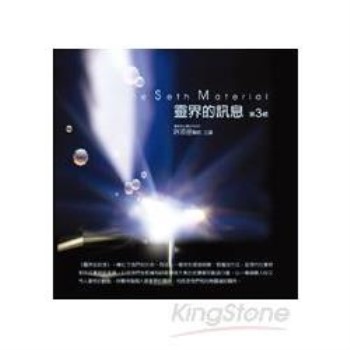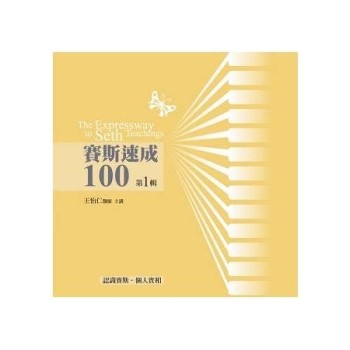| FindBook |
有 4 項符合
能源消耗.污染排放與運輸規劃作業關聯分析之研究(2/2)的圖書 |
| 圖書選購 |
| 型式 | 價格 | 供應商 | 所屬目錄 | $ 170 |
財經企管 |
$ 180 |
財經/企管/經濟 |
$ 190 |
政府出版品 |
$ 190 |
政府出版品 |
|---|
| 圖書館借閱 |
| 國家圖書館 | 全國圖書書目資訊網 | 國立公共資訊圖書館 | 電子書服務平台 | MetaCat 跨館整合查詢 |
| 臺北市立圖書館 | 新北市立圖書館 | 基隆市公共圖書館 | 桃園市立圖書館 | 新竹縣公共圖書館 |
| 苗栗縣立圖書館 | 臺中市立圖書館 | 彰化縣公共圖書館 | 南投縣文化局 | 雲林縣公共圖書館 |
| 嘉義縣圖書館 | 臺南市立圖書館 | 高雄市立圖書館 | 屏東縣公共圖書館 | 宜蘭縣公共圖書館 |
| 花蓮縣文化局 | 臺東縣文化處 |
|
|
本計畫係由運輸規劃角度出發,目標為在運輸規劃評估模式中納入能源消耗與排放之關聯分析,發展一套整合性評估架構。本計畫為多年期計畫之先導研究,第1~2年期先以城際運輸公路系統、小汽車大宗車型為研究對象。有別於傳統以旅次特性為分析基礎(trip-base),以行車距離衡量公路運輸之能源消耗與污染排放的概念(g/km);本計畫探討道路之節線特性(link-base),分析各種類道路之路段交通量與車速變化下,車輛能耗與排放特性的差異(g/sec)。本計畫運用新式車載量測設備(On-Board Emission Measurement, OEM),執行道路實驗與對應之實驗室實驗,蒐集車輛動態行駛之逐秒能耗與排放數據,以及對應之道路幾何特性、瞬時車速等;經由統計分析和模式檢定,建立車輛動態能耗、排放特性與公路運輸系統和旅運行為之關聯性。應用此一關聯性,本計畫研提一套運輸行為與能耗、污染之綜合評估架構,搭配運輸需求模式之路網或節線的旅行時間、旅行速率,估算公路運輸之能源消耗與排放總量。本計畫之創新性研究成果,對於公路運輸計畫形成過程之運輸規劃評估作業,提供一套分析工具,能夠敏感地評估永續發展面之能源消耗、排放的可能影響,有助於達成「增進運輸資源使用效率、減少環境污染與衝擊、推動永續發展策略」等決策目標。本計畫具體研究成果如下: 1. 蒐集文獻,探討推估模式之發展與應用。綜合歸納車輛能源消耗與污染排放特性之影響因素,並根據本計畫研究目標,建構一套具備可操作性之運輸行為與能源消耗、污染排放整合模式,以提供運輸方案評估參照。 2. 根據本計畫研究目標進行實驗設計與實際調查。完成2部實驗車、7種道路類型的道路實驗,以及對應之實驗室實驗,建立一超過31萬筆數據之資料庫,並據以建構出一組車速排放對照表(Look-up Table),提供各實驗車輛在7種道路類型各種車速下之動態能耗、排放率(CO2、CO、THC、NOx)(g/sec)。 3. 以2種方式建構運輸規劃與能源消耗、污染排放之動態曲線,整合於運輸規劃模式中,可動態推估各實驗車輛在7種道路類型各種車速下,每秒之能耗與CO2排放率(g/sec)。 (1) 方式1:以實驗車輛在各種道路類型上取得之隨車速變化的能耗/排放資料,直接建構動態的能耗/排放曲線。 (2) 方式2:建構各實驗條件間之轉換率,並以車速為解釋變數,建構各轉換率與車速間之關聯性;再加以連結得到一組綜合轉換率;藉以將法規審驗測試之單一標檢值予以展開,成為各道路類型隨車速變化之動態能耗/排放曲線。未來可用此方式轉換能源局/環保署之既有法規審驗測試資料庫,推估各車輛之動態能耗/排放率。 4. 探討國道收費型式及都市道路排放等2個案例,說明如何將研究成果應用在運輸規劃上,同時驗證所建構關聯模式的2種推估方式之可操作性與正確性。所建構模式之推估結果均符合實測情形;而且,應用時間單位能耗/排放率進行市區道路總量推估時,無須區分路段或路口差異,即可得到具平均車速敏感性的結果。
From the perspective of transportation planning, this project explores the feasibility of developing an “integrated evaluation framework” (IEF) which is capable of incorporating dynamic performance of vehicle energy consumption and emissions into the aggregate sequential travel demand model. Departing from the traditional mainstream which estimates vehicle fuel consumption and emissions on a trip-base, with parameters of distance, i.e. l/km or g/km, from a laboratory bag-stock test, we approach it in terms of g/sec with a link-specific correlation of traffic flow speed. It can be easily integrated into the link-base travel demand model as a new attribute of the highway network. Therefore it is capable of providing distinctive fuel consumption and emissions of varying traffic demands. Eventually, integrated with the correlations, the IEF shall turn out to be an analytical tool which enhances sustainability evaluation of transportation planning. In the first two years, as the pioneers of a long term study, we utilized test vehicles equipped with On-Board Emissions Measurement to gather second-by-second data of fuel consumption and emissions from on-road surveys. Likewise, designed analogous laboratory tests are performed to collect corresponding data to build up relationships with statutory standard test results published by BoE, MOEA and EPA. Major achievements of the first two years are listed as follows: 1. The “integrated evaluation framework” (IEF) is proposed. The correlations of vehicle energy consumption and emissions are conceptually assumed, and statistically proofed, as functions of link speed. It is incorporated into the aggregate sequential travel demand model as a network link attribute. 2. On-road surveys of 7 kinds of link-category of two vehicles, as well as analogous laboratory tests, are performed to form up the dataset of over 310,000 records. With the dataset, look-up tables of speed v.s. fuel consumption and 4 emission rates (CO2, CO, THC and NOx) are provided for each vehicle of link-category in terms of g/sec. 3. Two models of dynamic correlation function are investigated. Both models are statistically confident in estimating fuel consumption and CO2 emissions with traffic flow speed. (1)Model 1: correlation functions are directly derived from on-road surveys for each vehicle. (2)Model 2: correlation functions are developed from the speed-relevant compound conversion rate to statutory published data. The compound conversion rate is composed of a series of conversion rates of which each represents the condition difference of a pair of tests. All conversion rates are appropriately fitted as functions of speed. 4.Two case studies are presented to demonstrate how to integrate into transportation planning model and to validate the operability and accuracy of two models of dynamic correlation functions. It is concluded that the accuracy of estimated fuel consumption and CO2 emission of both models is highly acceptable to transportation planning model. In addition, in terms of g/sec, emission analysis of urban arterial can be easily performed without the necessity to cut up intersection sections from links.
- 作者: 林國顯
- 出版社: 交通部觀光局企劃組 出版日期:2009-06-01 ISBN/ISSN:9789860188516
- 類別: 中文書> 政府考用> 政府出版品
|












